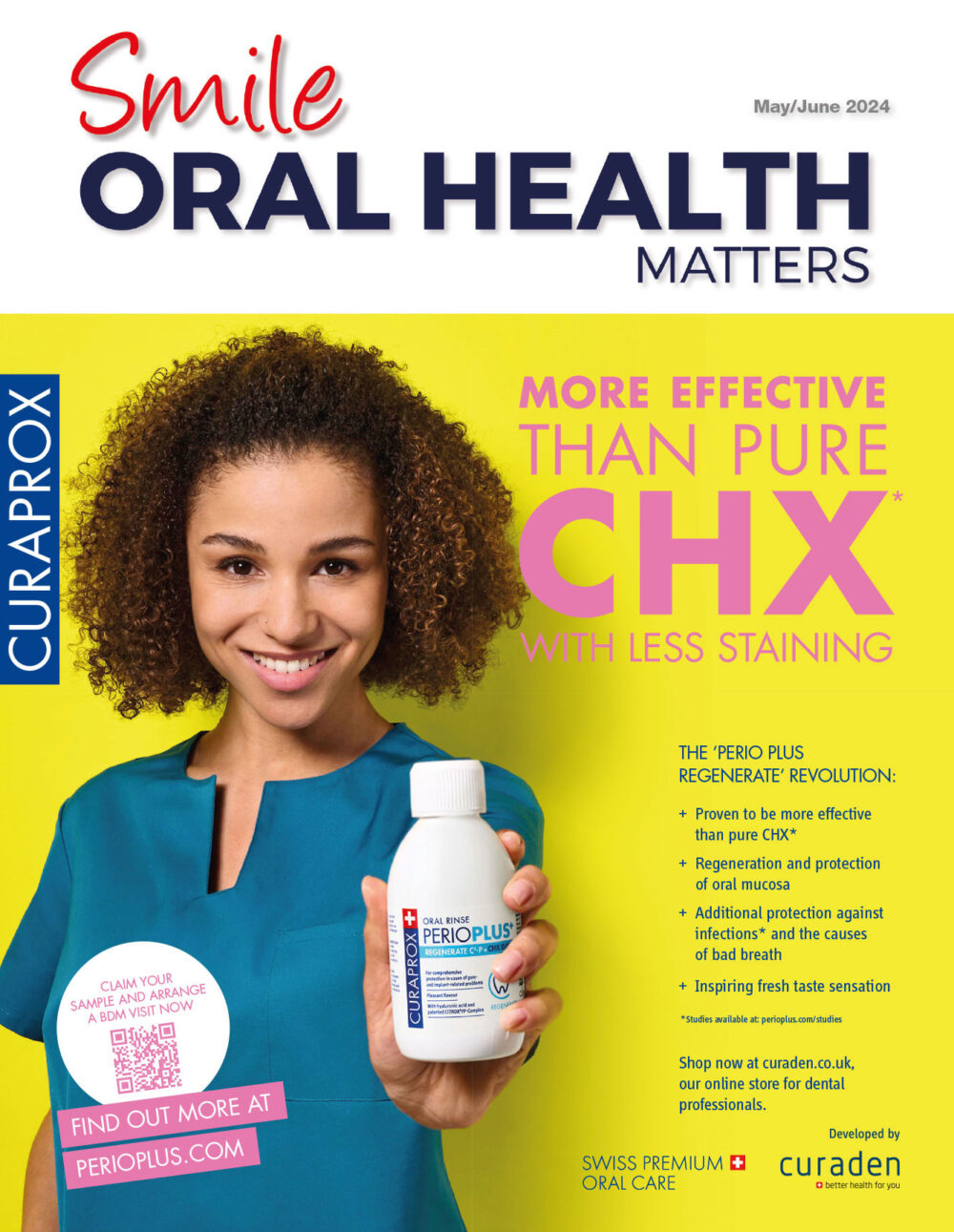Dr Samuel Johnson is a dentist with a special interest in endodontics at Ruabon Road Dental Practice, Wrexham. In November 2023, Sam was awarded the General Dental Practitioner Prize by the British Endodontic Society. He has a passion for education, using his YouTube channel to educate GDPs about common endodontic problems.
Here he presents a challenging endodontic case managing a perforation, and the location of a missing canal orifice.
Patient background
In March 2022 a patient was referred to me internally by another practitioner at Ruabon Road Dental Practice. The patient reported that he had recently been on holiday to Portugal and had suffered with toothache. Prior to visiting me, the patient saw an emergency dentist who accessed the tooth in question, tooth 16. However, they could only find two canals. The tooth was dressed, and symptoms subsided – but not completely, and the patient suffered from occasional episodes of pain. Overall, the patient was healthy, and a good candidate for root canal therapy.
Assessment and diagnosis
Pulpal diagnosis was straightforward in this case and in line with the American Association of Endodontists diagnostic terminology was classified as previously initiated therapy. In this case the tests carried out were minimal, the referral included a periapical radiograph.
Treatment planning
During the assessment there was a suggestion a perforation had occurred on the distal aspect of the tooth due to the radiolucency seen distally on tooth 16. . This would be consistent with the history of the difficulties identifying all canals. The patient was informed that the tooth would need to be investigated prior to commencing root canal therapy to assess restorability of any perforation. Furthermore, there was no obvious canal space seen on the radiograph – which may have indicated either a complex anatomy, or sclerosed/calcified canals. A CBCT was considered here, however one was not taken.
Treatment provision
The treatment was carried out over two appointments. The initial appointment was to assess whether the tooth was restorable or not; and to see if all the canals could be found. In the first instance it was found that the perforation could be easily repaired and was done so with a composite restoration – without the need for a bioceramic material (Figure 3).[i] Because only two canal orifices were seen on initial access, the second challenge was to find the third canal.[ii] However, due to the inaccurate access cavity created by the emergency dentist, the exact identification of these orifices was confusing. To help distinguish these orifices, two 10# K-Files were placed in each of the canals, and a periapical radiograph was taken. This confirmed the location of the palatal and distobuccal canals. It follows then, that given the orientation of the two canals, the mesiobuccal canal was the one yet to be identified.
When assessing the original access cavity, coupled with the confirmation of known canal orifices, a revised ‘ideal’ access cavity can be visualised. This can then aid in determining the area in which the mesiobuccal canal can be searched for. Safe and careful use of ultrasonic tips – rather than a fast handpiece, was then used to open this space up and the mesiobuccal canal was successfully found.
All three canals were then shaped successfully with WaveOne Gold Medium (35/06) and disinfected with sodium hypochlorite mixed with HEDP (Dual Rinse). This mixture provides a weak continuous dentine chelating effect, reducing the build-up of dentine debris throughout the appointment. It negates the need to give a final wash at the end of the shaping protocol with 17% EDTA, providing a single, simplified irrigant protocol.[iii]A cone fit radiograph was taken and demonstrated an appropriate fit, and obturation was completed.
The tooth was obturated with WaveOne Gold matched GP points and AH plus resin sealer. A core of composite resin was placed prior to sending the patient back to the referring dentist, who subsequently placed a full-coverage crown on the tooth. The radiograph shows the completed root canal immediately post operatively.
Treatment outcome
The patient attended 12 months after treatment for review. They stated that they were happy with the result. The crown had an excellent seal, and there were no signs or symptoms of pathology. A review radiograph was exposed revealing an intact periodontal ligament. Based upon these clinical and radiographic findings a favourable outcome was determined.
Learning points
Selecting the correct equipment is essential for difficult cases such as these. Clearly, the use of an operating microscope is a must for finding sclerosed canals; but more specifically in this case the use of ultrasonic tips (Figure 10). Using these specialised endodontic tips (not to be confused with their more widely used periodontal counterparts), are useful for two reasons. The first is the fact that they only remove small amounts of dentine at a time, which helps you investigate a cavity floor much more safely. Secondly, they provide better visibility compared to that of a fast handpiece. This adds to increased safety – reducing the likelihood of perforations.
For more information about the BES, or to join, please visit the website www.britishendodonticsociety.org.uk or call 07762945847
Author: Sam Johnson
[i] Clauder, T. (2022b). Present status and future directions – Managing perforations. International Endodontic Journal, 55(S4), 872–891. https://doi.org/10.1111/iej.13748
[ii] Vertucci, F. J. (2005). Root canal morphology and its relationship to endodontic procedures. Endodontic Topics, 10(1), 3–29. https://doi.org/10.1111/j.1601-1546.2005.00129.x
[iii] Arias-Moliz MT, Morago A, Ordinola-Zapata R, Ferrer-Luque CM, Ruiz-Linages M, Baca P. Effects of Dentin Debris on the Antimicrobial Properties of Sodium Hypochlorite and Etidronic Acid. J Endod. 2016 May;42(5):771-5. doi: 10.1016/j.joen.2016.01.021. Epub 2016 Mar 4. PMID: 26951957.












